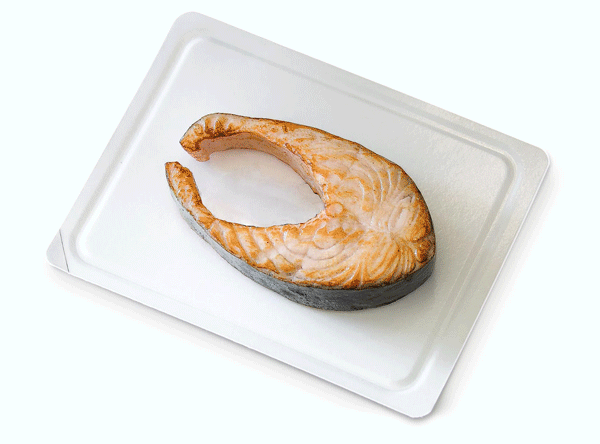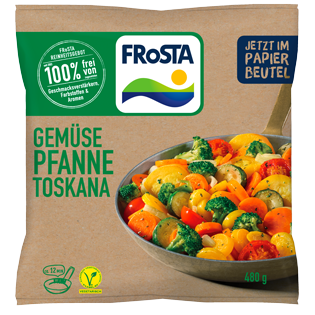The recycling paper industry needs raw material – fewer newspapers, less advertisement due to the Corona pandemic and increased electronic communication lead to decreasing amounts of paper for recycling.
Also, too much of the paper for recycling bypasses the sorting plant and thus the deinking mills, going directly into packaging – here due to the “Amazonitis” the demand is ever rising.
Complex composite packaging is often not recyclable and therefore not sustainable, even if it is fibre-based. And especially white fibres should stay where they generate the highest value. Even if sorting means effort, sorting is necessary to keep white fibres available for new white, graphic paper; for hygiene papers and white top liners – and to keep it from downcycling.
Availability and quality are the key issues for the INGEDE Symposium 2023. Expert speakers will show options for future sustainable raw material management: By certifying sorting plants to avoid costly refusals and negotiations, by certifying paper and print products for optimum recyclability, and by developing sorting technologies to save more white fibres for the white cycle.
The INGEDE Symposium will be a hybrid event, with participation in Munich on location at Haus der Bayerischen Wirtschaft in Max-Joseph-Straße 5, Munich, as well as online. Either way, the participation fee will be 460 euros.
On Tuesday night, all participants were invited to our Bavarian get-together from 18:00 on at Augustiner Klosterwirt, Augustinerstr 1 (opposite Frauenkirche, not “Augustiner am Dom”!).
.
All presentations are available for download for the participants of the symposium.
Here you can download the programme as pdf
What will we make paper from in the future? Paper for recycling is in short supply. More and more people read less and less newspapers, many believe that information from the internet is sustainable – despite the massive consumption of electricity, which is harmful to the climate.
Paper is sustainable, paper protects the climate, and yet it is scarce. Who can still insist on quality? At the INGEDE Symposium, everything will be about fibre supply of the future: Are there suitable alternative fibre materials? How do we deal with new fibre-based packaging? Which barriers are recycling-friendly? How is the recovered paper market developing regionally and globally?
.
All presentation slides will be prepared in English, all presentations will be simultaneously translated (German to English or English to German)
The livestream will have original audio and simultaneous translation to choose from.
.
Welcome and Introduction
Thomas Krauthauf, INGEDE
Presentation (pdf)
.
The revised version of the “Voluntary Commitment in Germany”
Martin Drews, GesPaRec/DIE PAPIERINDUSTRIE, Bonn
The updated commitment of the Working Group Graphic Papers (AGRAPA) is to be sent to the German Environment Minister Steffi Lemke this spring. It essentially includes a phase-out of mineral oil-based newsprint inks by 2028 and a commitment to further increase the amount of recycled paper used in graphic papers.
Presentation (pdf)
.
Keynote presentation
What is growing? What is shrinking? Who needs which fibers? Future RCP challenges
Arne Kant, AFRY Management Consulting, Munich
The focus of the symposium is the fibre supply of the future: Are there suitable alternative fibre materials? How do we deal with new fibre-based packaging? Which barriers are recycling-friendly? How is the recovered paper market developing, regionally and globally?
Presentation (pdf)
.
Introduction: New service and food packaging – “barriers” for the deinkers?
Axel Fischer, INGEDE
A “Proposal for a revision of the EU Packaging and Packaging Waste Directive” also contains requirements for recyclability. What do these mean for the paper industry? What does new fibre-based packaging mean for deinkers?
Presentation (pdf)
.
How does the Commission’s proposal affect the recycling industry, particularly the deinkers?
Ulrich Leberle, CEPI, Brussels, Belgium
The European Commission has proposed a new packaging regulation with, among others, targets on packaging prevention and recycling. What impact could this have on the collection of paper for recycling and recyclability? What kind of industry initiatives are there on this?
Presentation (pdf)
.
Trends in product packaging: Which alternatives to plastic does the market want, which not?
Jürgen Schwald, BMS Papier Concept GmbH, Wiesbaden
For a sustainable future: No plastic is also a solution. Packaging means constant adaptation and change – paper is making its way into food packaging.
Presentation (pdf)
.
The life cycle of paper packaging – how much more plastic do we need?
Urban Buschmann, Climate3, Neustadt am Rübenberge
Every product needs the best possible packaging. But does it always have to be the simplest and most convenient material without taking environmental concerns into account? Paper packaging as a substitute for plastic against the background of the entire life cycle including recycling.
Presentation (pdf)
Proposal for a revision of EU legislation on Packaging and Packaging Waste
auf der Webseite der Europäischen Kommisssion


.
Introduction
Anne-Katrin Klar, Essity, Mainz-Kastel
Presentation (pdf)
.
CEPI Preliminary Statistics 2022, are long-term trends changing?
Hans Wortman, WEPA, Arnsberg
As Chairman of the CEPI Recycling Committee and Chair of the 4evergreen initiative, Wortman highlights trends in the paper industry
Presentation (pdf)
.
Challenge Circular Economy – Current research topics about the paper stream
Karoline Raulf, RWTH Aachen
What can research contribute along the value chain of the paper cycle? Current research projects analyse the potential of previously unused raw material sources or describe the change in the material flow of recovered paper and its impact on the process chain. What opportunities do digital networking and AI tools offer here?
Presentation (pdf)
.
Deposits on the paper machine – Adhesives say hello again
Axel Fischer, INGEDE
Magazines have them on Christmas, Easter,and other occations – self adhesive stickers. Grocery stores enclose them with the local paper to allow customers to label their own discount. Offices label envelopes because it’s easier than addressing them directly. And then the adhesives say hello again, from the webs and blades and rollers in the drying section of the paper machine. A new source for sticky deposity are barrier coatings for packaging.
Presentation (pdf)
.
Fibre in action:
How ‘Paper for Recycling’ becomes ‘Paper with Purpose’
Sarah Lesting and Dr. Matthias Elsweier, Leipa
Paper for recycling is a valuable resource, but this is often lost in everyday life. How can recyclers improve communication for our industry and consumers and thus the recycling loop? The Regio Loop project with Pinguin Druck from Berlin shows: Based on our solution fiberloop, circular economy becomes possible on a regional level.
Presentation (pdf)
.
More revenue and fewer returns: Certification of sorting plants (INGEDE Project 169 21)
Dr. Arne Krolle, INGEDE, Bietigheim-Bissingen
Experiences with the process of certification show that parallel to the actual certification, it is necessary to set up a new INGEDE Method to define the optical quality determination using a camera in real-time.
Presentation (pdf)
.
Detecting brown cardboard with the camera
Michael Lindner, UPM, Augsburg
How do you automatically assess the brown cardboard content in a stream of paper for recycling? A camera-based system allows a paper sorting plant to react quickly to quality changes and to document the quality of the recovered paper produced.
Presentation (pdf)
.
Reaching true circularity of paper-based materials by a holistic and innovative approach
Martine Assié & Cornel Kuiper, Bollegraaf Recycling Solutions, The Netherlands
Data gathering is a key element to create the MRF of the future. This will enable autonomous, informed decisions to optimise the throughput, purity, and profit of the sorting plant.
Präsentation (pdf)
.
Artificial intelligence for incoming material inspection
Jake Woolfenden, TrueCircle, London, UK
TrueCircle deploys AI Camera vision systems on Paper Sorting Plants which continuously monitor in real-time the exact composition by weight of 100 % of the infeed and outfeed line material (categorising into detailed fibre grades such as newspaper, magazines, cardboard, greyboard, white paper etc).
Presentation (pdf)
.
Digitalisation of processes:
Increased effectiveness in stock preparation and more efficient production thanks to advanced process control systems
John Schulz, BTG Instruments GmbH
There is still potential in many plants: With improved control technology, the yield can be optimised, and fluctuations in the product can be reduced. From here, it is not a long way to digitalisation.
Presentation (pdf)
.
Can the new CEPI method replace the well-established? Orientation in the jungle of test methods
Andreas Faul, INGEDE, Bietigheim-Bissingen
The trend towards more fibre-based packaging and the amendment of the EU Packaging Regulation have drawn much attention to test methods and evaluation schemes for recyclability. However, their diversity is confusing even for experts. How do the methods of INGEDE, Cepi, the institutes, the 4evergreen alliance and standardised test methods interact, and where are there still “white spots”?
Presentation (pdf)
.
Outlook, next INGEDE Symposium
Dr. Thomas Krauthauf, INGEDE

Unser Wald ist Berlin – Unser Papier heißt Regio Loop
UmDEX über eine eigene Marke und ein nachhaltiges Vertriebskonzept für Recyclingpapier
.
EMPOWERING RECYCLERS
WITH AI
TrueCircle
Theme: Illdy. © Copyright INGEDE 2024. All Rights Reserved. All pictures copyrighted.
